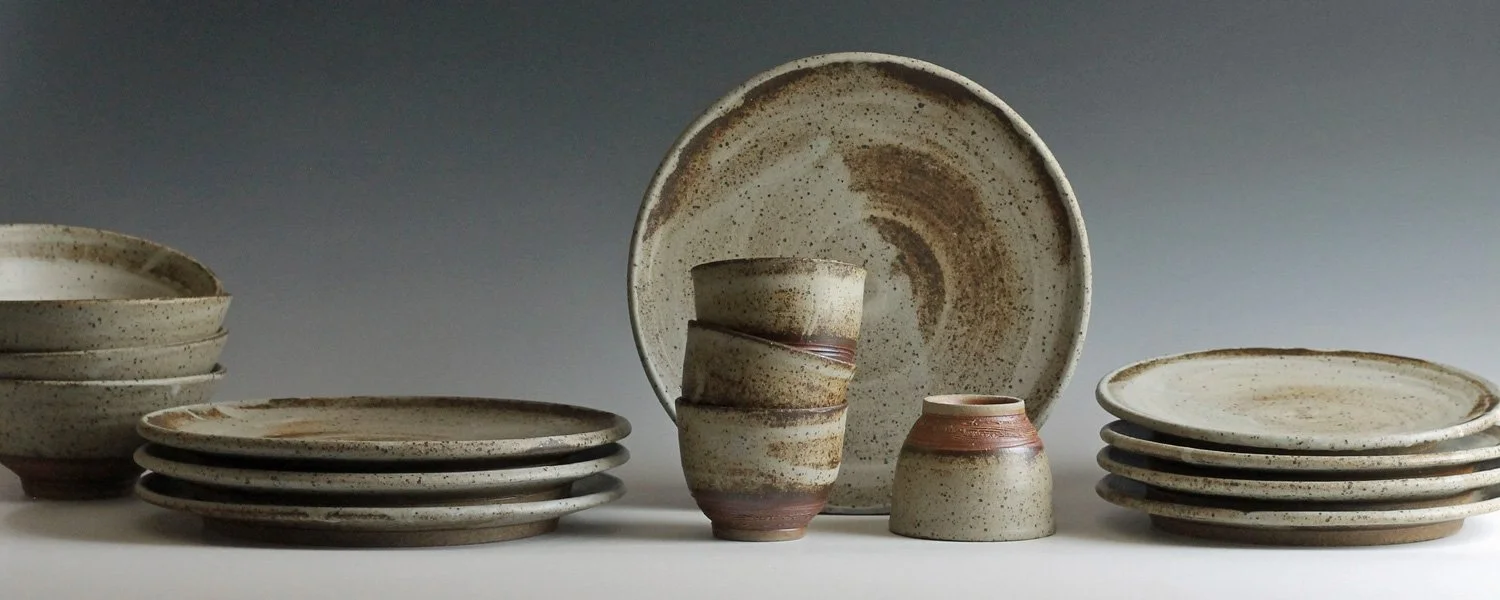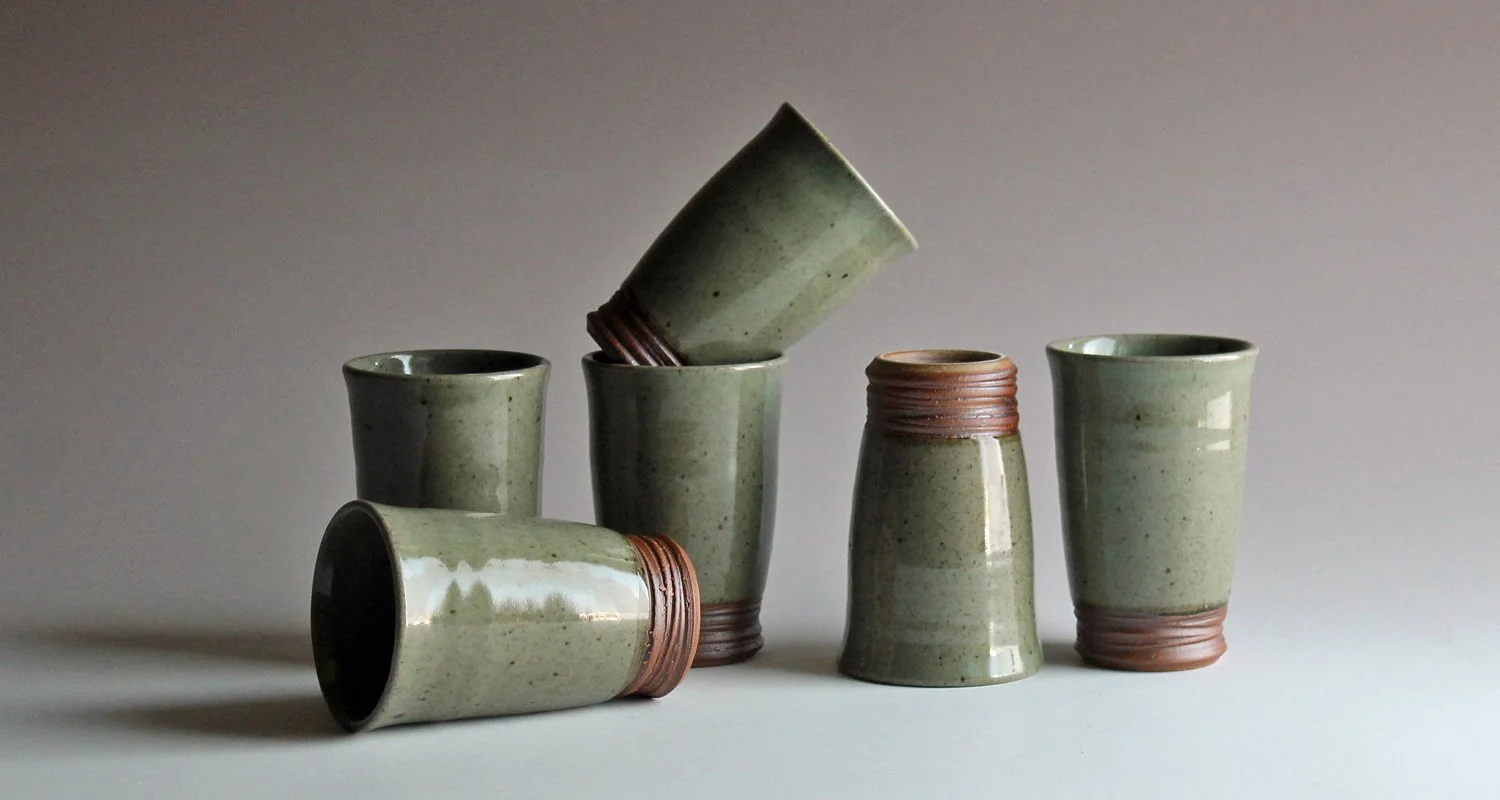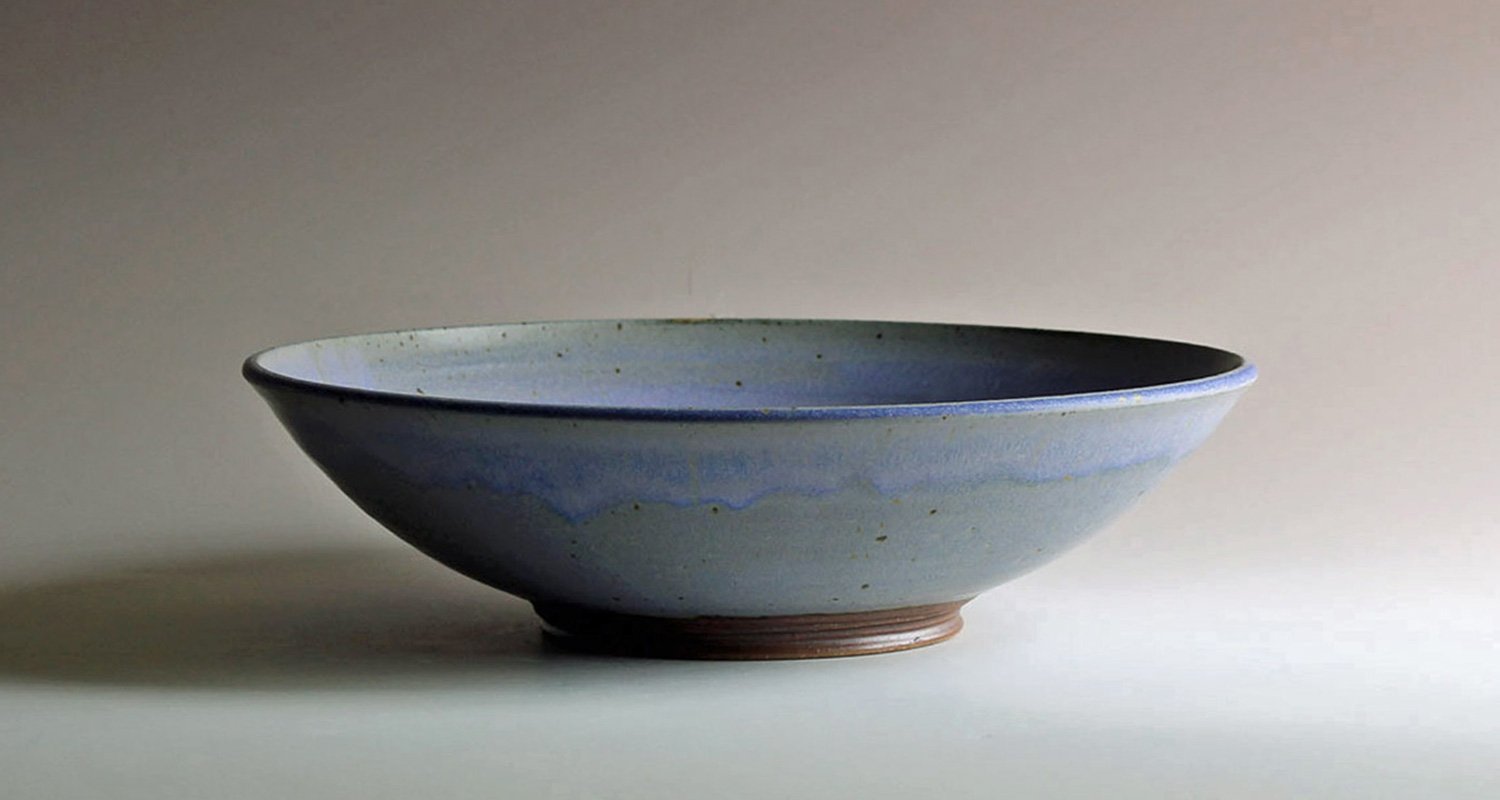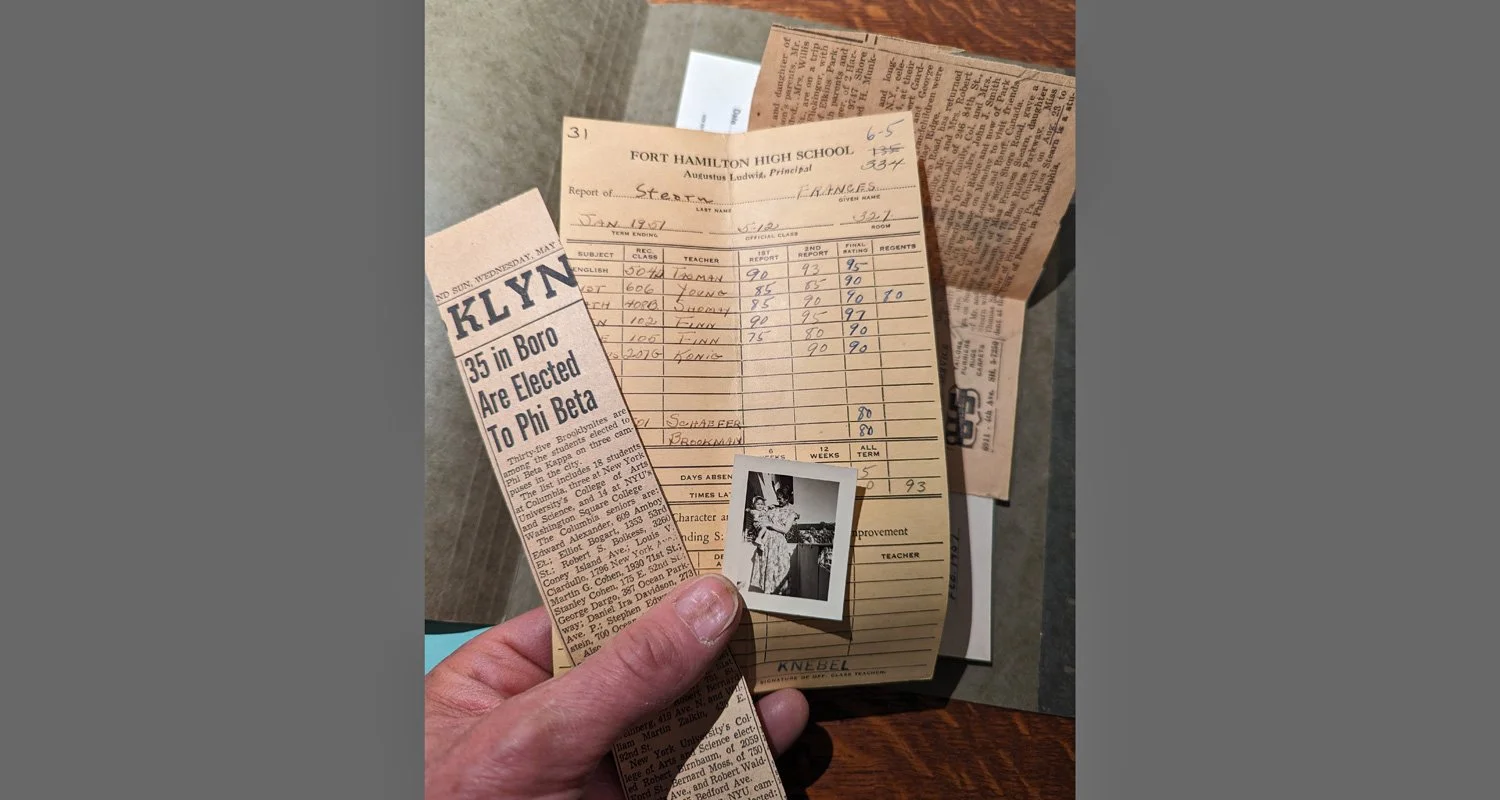Over Time
In 1977, when my family moved out of a college rental & into a house of our own, my father commissioned someone on campus to make us a dinnerware set. I don't know if it was one of his students, or maybe the person teaching ceramics. That was at the height of the American studio potter movement, or maybe just after, just at the start of its decline, Jerry Williams was still editing his eponymous magazine, Toshiko Takaezu was coming to the little campus where my dad taught to do workshops, Dan Rhodes had just retired from Alfred University, a hundred miles away, the real epicenter of studio pottery, having written the reference books on glazes and kiln building that found their way during the Sixties into so many garages, old barns, and high school art rooms. Val Cushing was there at Alfred too. In Syracuse, fifty miles in the other direction, Garth Clark and the Everson Museum were producing the Ceramic Nationals, juried shows that reshaped how pottery was seen in the art world. And just in the country overall.
I was oblivious to this of course, though we did sometimes go to the Everson Museum, in those days, the four of us squeezing into the VW bug to make the drive. What did I care about studio pottery? And – why did we actually need all these new plates and bowls? Especially since we only got them out when people were over. The rest of the time we used thick, chipped, slip-cast whiteware that had a red printed pattern on it. That I do remember. A scalloped edge I could run my finger along.
You work quickly, as an artist, ideas come to you, your own inclination reveals itself to you as you work, and your sense of form, of the beautiful, is something you discover about yourself, and about your own pots, as you work. All learning is remembering, as Plato pointed out.
For years my dad's dinnerware was the standard of what 'good' pottery felt like and looked like – the matte yellow, heavily-reduced claybody, iron-spotted, the 'hand-made' look. As I sat at the table, bored, waiting for dessert, listening to adults talk, I flipped an empty cup over. I looked at the foot. My thumb and finger traced the curve of the handle.
Just a little bit after those years my father was gone and a few more moments after that, it seemed, my mother was retired, living in a little downtown apartment, no more gardening. The dinnerware sat in a stack in a cabinet waiting, as before, for a special occasion to get it out. But the special occasion wouldn't be one of my parents' big dinner parties anymore, it would be my visit. I was a potter by then, across the country, never making it back often enough to see my mother. We'd sit and have tea and when she left the room for a moment I would steal to the cabinet and pull out a couple of the plates, maybe a few bowls and cups, for inspection. A surprising change had taken place. It is so not true that stoneware is an indelible permanent material. The plates were not that good anymore.
I was shocked! They were flat, as though weighed on by gravity, afraid to curve upward, and they had a drawn feeling, a little nervous. They suffered from a beginner's mistake too – some of the middles were higher than the rim. I couldn't quite believe it at first. I have students in my own studio who make way better work than this.
I swung the cabinet door shut as my mother walked back in the room. She moved carefully, with the precision of the elderly, her hand reaching for the back of the couch.
You ever use these anymore Mom? I asked.
Sometimes! She said hopefully. Why, would you like it? You can have it.
Not right now. Only – don't start giving this away okay? Let's keep all this together as a set.
I could have them mailed out to you.
Hmm, I said. That would be kind of a big deal.
A what?
Let's just keep them here for now, I repeated, my mother was getting to that age when you want to give everything away, I was wondering what would ever happen to all these bowls, cups, plates. It's a cliché that clay is about memory, a carrier for domestic history, for the past, setting aside for a second the geologic past that clay is really about. I do love how pots remember, and teach you by helping you remember, and remind you of who you are. I love how it's the invisible dimensions of ceramic form that matter most. And, how the physical dimensions change so much with time.
After September last year my mother was gone too, and I went back to the little apartment. I took a deep breath, and got out one of the cups, letting my thumb and finger trace the curve of the handle, flipping it over – all potters do this – to look at how the foot was trimmed. These cups are a lot smaller than they used to be. Still though, quite a deal to have to pack up all eight. Eight cups. Eight sets. Hardly any of it ever broke. Thirty-two pieces.
I sighed, and surveyed the claustrophobic room, my hand reaching for the back of the couch. I only had a short time to sort everything, and sorting is not my best skill, so my dad's dinnerware ended up in boxes under the ping-pong table of my high school friend Jon in his garage. With the help of my friend Adam I got the car sold, after it sat in his driveway for several months & his daughter had to return to the apartment building to track down my mom's snow tires. Lots of snow in that town, always, halfway between Alfred & Syracuse.
I texted to thank Adam for his help selling the car, and his daughter's help too.
If you want she could take the plates down to Mimi's Attic for consignment.
What, the license plates from the car – these are valuable?
No – the pottery plates. Under the ping-pong table at Jon's?
Oh, I said. Those plates. Hmm, I think...I kind of want to keep those. Only, it'll be kind of a big deal to pack them all up.
Meanwhile in the studio, life goes on. Which is the best thing about life in studio. Outside it things change, they stop & start, while entering the room where you make pots is always like diving underwater – whatever is going on up on the surface disappears. You can't hear it. You work. As it happens I have a commission at the moment for a big set of dinnerware. The person who emailed me about it, and wanted to meet & discuss the possibility last fall, as it happens, grew up in Alfred. His parents were friends with old Dan Rhodes & Val Cushing. He went to school with their kids.
I really like your work, he said. I like those matte glazes!
I nodded just a little wistfully. Me too, I said. I really am stuck on those Seventies glazes.
Tonight I just trimmed the last of his work. It has been cathartic, and connecting, to have a big project to keep me in the studio & my head underwater. I saved the plates for last, and I looked critically as I wrapped them so they'll dry slowly – are they relaxed? Are they lively, reaching upward? Are the middles the lowest point?
I sure hope so. Still – I know, it's totally inevitable, clay always reaches into the past, and all learning is remembering — these plates will someday be in cardboard boxes under someone's ping pong table. It'll cost a fortune to get them mailed across the country, some day in the distant future, and for what? What will happen to them then?







